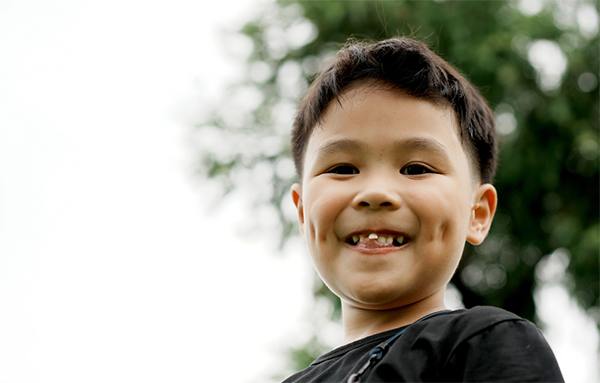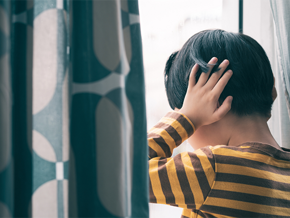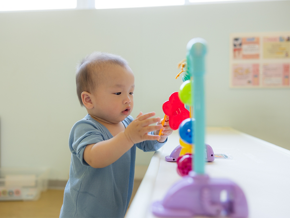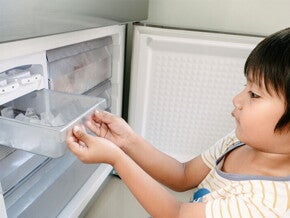
Your 6-year-old runs up to you, grinning while proudly wiggling a loose front tooth. You immediately recall your lolo’s advice to tie one end of a string onto the loose tooth and the other end to a doorknob, then slamming the door shut to dislodge it. While that method makes for a funny story, there are better ways to handle your child's loose milk teeth.
This guide provides a timeline when baby teeth appear and fall out, plus tips to make dental care a positive experience for your child and you.
What Are Milk Teeth and Why Are They Important
Milk teeth, also called baby teeth or deciduous teeth, are the first 20 teeth your child develops. These primary teeth are essential for your child’s healthy development, and protecting them from decay is critical.
Tooth decay starts alarmingly early in the Philippines. A 2024 study in Caloocan City found that 29.2% of toddlers with an average age of around 13 months already have tooth decay. This early onset may help explain why the 2018 national survey found that 85.2% of 5-year-old Filipino children have dental caries.
Want to know the best way to protect your child's smile early on? Start by understanding what these milk teeth actually do.
They save space for permanent teeth
Each milk tooth acts as a placeholder, saving a spot in the jaw for the permanent tooth that will follow. According to the American Academy of Pediatrics (AAP), if a baby tooth is lost too early, nearby teeth can shift into the empty space, potentially leading to crowding and the need for braces later on.
They help with proper speech development
Your child's teeth, tongue, and lips work together to form sounds. The presence of milk teeth allows your child to pronounce words correctly as they develop their language skills.
They aid with good digestion
A healthy set of teeth allows your child to chew a variety of foods properly, notes the AAP, which is crucial for healthy digestion.
The Complete Timeline for Milk Teeth
The timeline for baby teeth’s growth varies, but you can generally expect the first tooth to erupt between 6 and 12 months of age. By the time your child is around 3 years old, they will likely have all of their milk teeth.
This chart from the American Dental Association (ADA) shows the typical age ranges for when each tooth appears (erupts) and falls out (sheds).
| Tooth Name | Erupts (comes in) | Sheds (falls out) |
| Lower Central Incisor | 6-10 months | 6-7 years |
| Upper Central Incisor | 8-12 months | 6-7 years |
| Upper Lateral Incisor | 9-13 months | 7-8 years |
| Lower Lateral Incisor | 10-16 months | 7-8 years |
| Upper First Molar | 13-19 months | 9-11 years |
| Lower First Molar | 14-18 months | 9-11 years |
| Upper Canine (cuspid) | 16-22 months | 10-12 years |
| Lower Canine (cuspid) | 17-23 months | 9-12 years |
| Lower Second Molar | 23-31 months | 10-12 years |
| Upper Second Molar | 25-33 months | 10-12 years |
Children typically start losing their baby teeth around the ages of 6 to 7, beginning with the front central incisors—the first teeth to erupt. Then it continues with the lateral incisors, first molars, canines, and finally the second molars until around age 12.
What to Expect When a Tooth Gets Loose

When a tooth gets loose, encourage your child to wiggle it gently, but avoid pulling it out before it's ready to fall out.
As a permanent tooth grows, it pushes up from underneath, causing the milk tooth to loosen and fall out naturally. You can let your child wiggle it gently with their tongue or even finger, but it’s best to let it fall out on its own. This helps avoid breaking the root, which can lead to infection.
How to Care for Milk Teeth
Caring for the teeth of a baby and toddler sets the stage for a healthy adult smile, and good oral hygiene should begin even before the first tooth appears. Here are some tips from the Philippine Dental Association, Inc. to get you started.
Before teeth erupt
Gently wipe your baby's gums with a clean, damp washcloth after feedings to remove bacteria.
As teeth appear
Once the first milk tooth arrives, the Philippine Dental Association suggests using a soft-bristled infant toothbrush and a smear of fluoride toothpaste.
During the transition to permanent teeth
As your child’s smile features a mix of baby and adult teeth, teach them the importance of having good oral hygiene. Continue to supervise their brushing to make sure they reach all surfaces of every tooth—front, back, and top.
Teach your child to brush their teeth twice a day for at least two minutes, using a corn kernel-sized amount of fluoride toothpaste. Don't forget to have them gently brush their tongue, too. Finally, ensure they spit out the excess toothpaste but avoid rinsing with water immediately after so fluoride stays on their teeth longer to help protect from cavities.
If flossing is tricky for little hands, try using special picks or pre-threaded flossing tools to make it easier.
When to See a Dentist
Don't wait for tooth pain. An early dental visit by age one is the best way to prevent cavities before they start.
As a permanent tooth grows, it pushes up from underneath, causing the milk tooth to loosen and fall out naturally. You can let your child wiggle it gently with their tongue or even finger, but it’s best to let it fall out on its own. This helps avoid breaking the root, which can lead to infection.
The American Academy of Pediatric Dentistry (AAPD) recommends scheduling your child's first dental visit when their first tooth appears, or no later than their first birthday. However, a 2022 study in the International Journal of Clinical Pediatric Dentistry found that the average age for a first dental visit was 7 years old, typically after kids already had cavities and tooth pain.
Regular check-ups help your child get comfortable at the dentist's office and allow potential issues to be spotted early. You should also see a pediatric dentist if:
- A permanent tooth grows in behind a milk tooth ("shark teeth").
- Your child is experiencing any unusual tooth pain.
- Your child’s first tooth hasn’t appeared at 18 months.
- A milk tooth doesn’t fall out more than a year after its expected time.
Milk teeth may be temporary, but they shape your child’s smile, nutrition, and speech development. By caring for these baby teeth, scheduling regular dental check-ups, and guiding your child through each wiggly tooth, you’ll help set the foundation for a lifetime of healthy dental habits.
Got a tip or story about losing milk teeth? Connect with a community of parents and swap your best stories and advice in the ParenTeam Moms and Dads Facebook group!
References
Better Health Channel. "Teeth Development in Children." Accessed September 29, 2025. https://www.betterhealth.vic.gov.au/health/conditionsandtreatments/teeth-development-in-children
HealthyChildren.org. "When Children Begin to Lose their Baby Teeth." Last updated June 1, 2007. Accessed September 29, 2025. https://www.healthychildren.org/English/healthy-living/oral-health/Pages/When-Children-Begin-to-Lose-their-Baby-Teeth.aspx
Mark, Anita M. "Key points for your child’s teeth." The Journal of the American Dental Association 153, no. 1 (2022): 94. https://doi.org/10.1016/j.adaj.2021.10.005
Mayo Clinic. "When do children start losing baby teeth?" Last modified 2025. Accessed September 29, 2025. https://www.mayoclinic.org/healthy-lifestyle/childrens-health/expert-answers/baby-teeth/faq-20058532
MedlinePlus. "Development of baby teeth." Last reviewed October 20, 2024. Accessed September 29, 2025. https://medlineplus.gov/ency/imagepages/1138.htm
Oliveros-Villarico, M., K.K.R. Flores, J.C.Z. de Guzman, A.L.V. Manrique, G.A. Millo, and K.R.P. Estrera. "Pediatrician Knowledge, Attitude and Practices on Children's Oral Health in a Tertiary Public Hospital in the Philippines: A Descriptive Study." Acta Medica Philippina 57, no. 7 (2023): 56–63. https://doi.org/10.47895/amp.vi0.5323





























